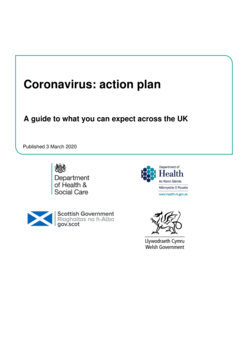Hello! You're looking at a policy document report on Overton
We track government policy, guidelines, think tank research, working papers and more to help our customers see the impact and influence of their work. Are you interested in seeing what information we have to offer? Request a free trial to our platform.
If you fund, produce or manage research or work to influence policy, we'd love to talk. Learn more on our homepage.

Coronavirus action plan
Topics in this document
Related SDGs
Target 3.d
Strengthen the capacity of all countries, in particular developing countries, for early warning, risk reduction and management of national and global health risk
Cites research funded by
Citations
Rights & Permissions
Uses license: Open Government Licence
Content from GOV.UK is subject to Crown copyright protection and is published under the Open Government Licence (OGL)
